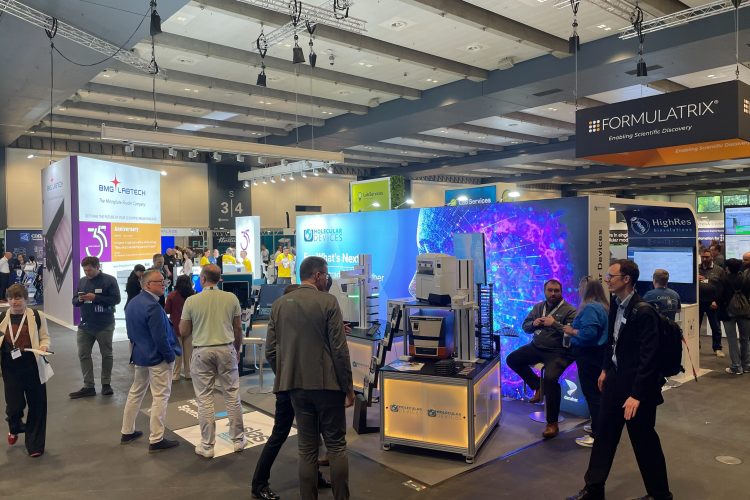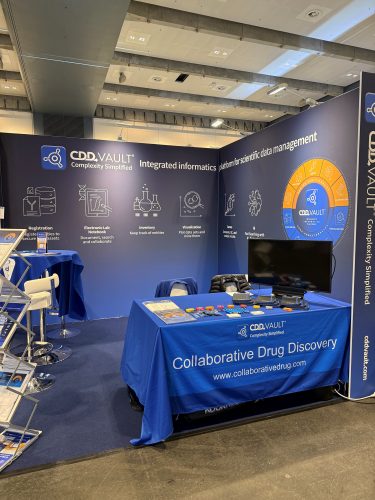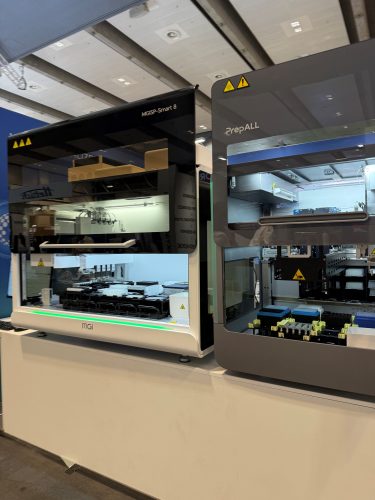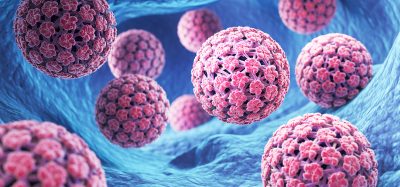What SLAS 2025 really told us about drug discovery
Posted: 30 May 2025 | Carrie Haslam | No comments yet
Forget the buzzwords – SLAS 2025 showed what’s genuinely driving progress in drug discovery: usable AI, collaborative platforms and tools that solve real problems.


Drug Target Review had the pleasure of attending SLAS Europe 2025 in Hamburg and what we saw was no mere showcase of cutting-edge tools, but a clear snapshot of where drug discovery is heading. With smarter systems, usable AI, streamlined automation, and far better ways to manage the ever-growing complexity of scientific data, the event opened eyes to the tangible technology that is opening doors to therapeutic solutions.
This year, the focus wasn’t on bold claims it was on practical progress. Accessibility, integration and real-world application took centre stage, as technologies quietly demonstrated how they are reshaping the day-to-day reality of drug discovery.
So what really stood out at SLAS 2025?
Across booths, presentations and conversations, five recurring themes emerged – each pointing to a future where discovery is faster, cleaner and more connected.
Automation now plays a central role in discovery. From self-driving laboratories to real-time bioprocessing
This report explores how data-driven systems improve reproducibility, speed decisions and make scale achievable across research and development.
Inside the report:
- Advance discovery through miniaturised, high-throughput and animal-free systems
- Integrate AI, robotics and analytics to speed decision-making
- Streamline cell therapy and bioprocess QC for scale and compliance
- And more!
This report unlocks perspectives that show how automation is changing the scale and quality of discovery. The result is faster insight, stronger data and better science – access your free copy today
1. Data management is no longer optional
A persistent theme throughout the event was the growing pressure on discovery teams to manage complex, high-volume data in a way that is not just secure, but collaborative and actionable. As labs scale up and spread out – often working across functions, sites and platforms – the risks of lost, duplicated or siloed data continue to rise.
This is where platforms like CDD Vault are stepping in.
According to Joanna Deek, Director of Business Development at CDD Vault, one of the core challenges in modern R&D is handling data scattered across teams, tools and departments:
“The main problem that CDD Vault solves is data security. It consolidates data across teams – scientists, logistics and other stakeholders – and makes that data traceable.”
Rather than relying on a patchwork of disconnected systems, CDD Vault provides a central platform where users can store, trace and work with their data collaboratively.
“You’re no longer dependent on multiple software platforms. You can put everything into one platform, and multiple people can engage with the data,” she explained.


Drug Target Review visited the Collaborative Drug Discovery booth at SLAS Europe 2025, where CDD showcased the latest developments in CDD Vault – their integrated platform for managing and analysing chemical and biological data in drug discovery.
2. AI that supports discovery
Joanna also clarified CDD Vault’s approach to AI – specifically, how it supports more efficient workflows without compromising data privacy.
“The software is able to learn from user behaviour on the platform and enhance performance, but we do not use customer data to train our algorithms.”
The platform’s AI module includes tools such as bioisostere suggestions, patent checking and integration with NVIDIA’s BioNeMo tools, enabling users to simulate protein structures and inform early compound design.
“You can simulate the structure of a protein. These are things the platform now enables.”
3. Smarter discovery, better outcomes
Dr Alison Jones, Senior Director at Charles River, presented Logica – an AI-enhanced small molecule discovery platform co-developed with Valo Health.
“We don’t just generate data for the sake of it. We generate it intentionally to feed models that guide decision-making.”
Logica combines Charles River’s biology and chemistry expertise with Valo’s predictive modelling to support the entire early discovery process. The platform offers flexible entry points depending on each client’s needs – whether that’s target validation, ADME/PK profiling, or evaluating efficacy and safety.
“More than a third of our candidates reach Phase IIB – that’s twice the industry average,” Jones added. “It reflects the value of combining AI with experienced scientific oversight.”


Dr Alison Jones, Senior Director at Charles River, presented Logica – an AI-driven small molecule discovery platform developed in collaboration with Valo Health.
4. Automation that reduces noise, not just adds speed
Gerd Grosshauser from Formulatrix offered a clear message: automation should not only enhance capacity but clarity, too.
“We’re engineers at heart – over 50 percent of our 1,300 staff are engineers. But automation isn’t just about speed. It’s about clarity,” he said.
Formulatrix builds its systems entirely in-house – from software to laser parts – to ensure every instrument delivers reliable, consistent performance.
Automation isn’t just about speed. It’s about clarity.
“In science, we talk about signal-to-noise ratios. That’s how we think about our tools too – the design, the interface, even the feel. Less noise, more science.”
We also heard from Giancarlo Basile at MGI, who emphasised that automation has wider application than just for high-throughput operations.
“Maybe you’re working with two samples, but they’re rare cells or expensive reagents,” he reflected. “That precision matters. Automation gives you peace of mind. The instrument does the same thing, the same way, every time.”
Traditionally known for sequencing, MGI is expanding into automation, helping labs of all sizes achieve reproducibility, consistency and peace of mind.
5. Why startups are moving fast, and why it matters
Startups were highly visible at SLAS 2025, and their appetite for agile, scalable platforms was clear.
Oryl Photonics, a Swiss-based innovator, showcased a solubility measurement solution based on laser light-scattering technology, designed to support greener lab practices. By using minimal chemicals and drug compounds, and streamlining workflows, the platform offers both environmental and cost advantages.
Meanwhile, ThirdLaw Molecular LLC introduced its proprietary Spiroligomer™ molecules – a new therapeutic modality with the potential to revolutionise disease diagnosis and treatment. With strong IP protection and a clear mission, ThirdLaw is aiming to build a new category of safer, more targeted medicines.
These companies – like many startups at SLAS – are proving that innovation doesn’t require scale, only sharp focus and smart tools.


MGI showcased their latest automation solutions, including the PrepALL Flexible Liquid Handling Platform – designed to simplify complex laboratory tasks.
The big takeaway: less volume, more value
SLAS 2025 made one thing clear: drug discovery isn’t just accelerating – it’s evolving.
Teams are now prioritising:
- Centralised platforms that reduce duplication and enhance collaboration
- AI tools that support informed, earlier decisions
- Automation that integrates with real-world scientific workflows
- A mindset shift from ‘collect more’ to ‘learn more’.
Reflecting on the vital role of these tools in the lab, Joanna Deek noted:
“Digital tools are no longer a nice-to-have – they’re a need-to-have.”
And Dr Alison Jones agreed. Insights gained through data-enabled tech are crucial to bringing new therapies to the clinic: “It’s not just about the potency of a compound. It’s about having the right data to move forward with confidence.”








